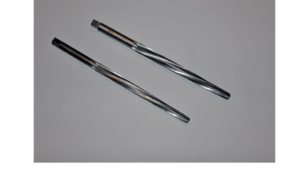Staybolt: Difference between revisions
No edit summary |
No edit summary |
||
| Line 1: | Line 1: | ||
[[Category:Steam Locomotive Parts]] | [[Category:Steam Locomotive Parts]] | ||
A [[Staybolt|staybolt]] is a bolt or short rod commonly threaded throughout its length and used as a stay to connect opposite plates in a steam boiler that are subjected to a pressure tending to force them apart. | |||
== Staybolt Tap == | == Staybolt Tap == | ||
[[File:Staybolt Tap Smithsonian.png|thumb|right|300px|This tool is part of a collection of hand tools used in the inspection and repair of steam locomotives in Salisbury, North Carolina from the early- to the mid-20th century, roughly 1900-1955. Light repairs on steam locomotives were usually done in roundhouses at the many small locomotive terminals.]] | [[File:Staybolt Tap Smithsonian.png|thumb|right|300px|This tool is part of a collection of hand tools used in the inspection and repair of steam locomotives in Salisbury, North Carolina from the early- to the mid-20th century, roughly 1900-1955. Light repairs on steam locomotives were usually done in roundhouses at the many small locomotive terminals.]] | ||
Latest revision as of 17:18, 26 January 2018
A staybolt is a bolt or short rod commonly threaded throughout its length and used as a stay to connect opposite plates in a steam boiler that are subjected to a pressure tending to force them apart.
Staybolt Tap
From the Smithsonian Collection:
Staybolt taps were used by boilermakers when installing or repairing the fireboxes of steam locomotives. Taps" are designed to cut threads into drilled holes, so that threaded bolts or threaded machine screws can be screwed in. The long tap was screwed into pre-drilled holes through the boiler's outer steel shell and into the steel firebox within the boiler. The tap cut threads into the hole in the outer boiler shell and also into a corresponding hole in the firebox. The tapped hole permitted a "staybolt" to be inserted and screwed into place; each staybolt held the boiler shell and the firebox firmly together."
